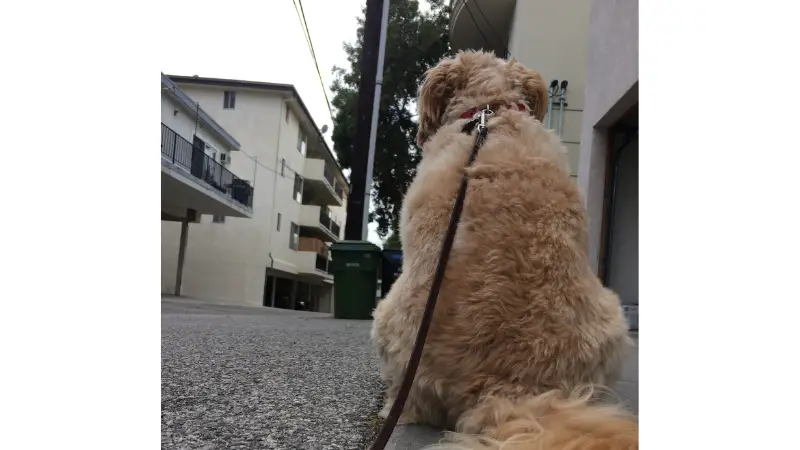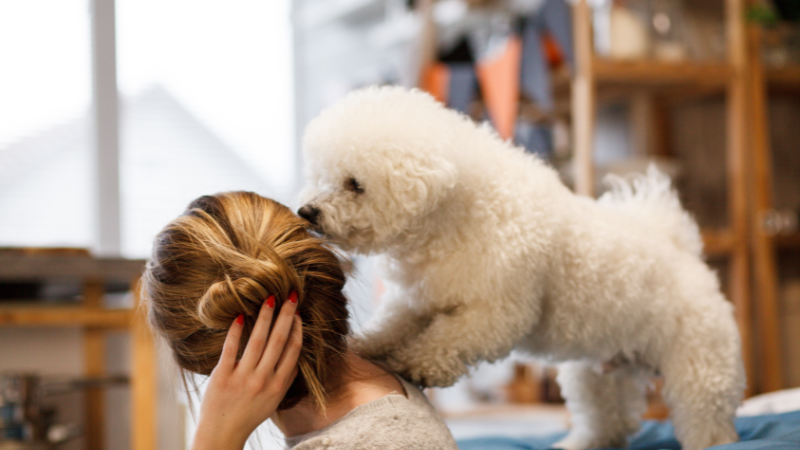Ignore your dog for at least 10 to 15 minutes after scolding them. Ignoring your dog for a short period after scolding them can help reinforce the message that their behavior was not acceptable.
This can help them understand that certain actions will result in being ignored. Ignoring them for a short time also allows both you and your dog to calm down before re-engaging. However, it’s important to note that ignoring your dog should only be done for a short duration and not as a long-term solution.
Consistency, positive reinforcement, and training are essential for effective behavior modification in dogs.
Understanding Your Dog’s Emotions
Dogs are highly sensitive and emotional beings, capable of experiencing a wide range of emotions just like humans. As responsible pet owners, it is essential for us to be aware of and understand these emotions, especially when it comes to disciplining our furry pals. One important aspect of this understanding is knowing how long to ignore your dog after scolding. Ignoring your dog after scolding can play a crucial role in helping them process their emotions and learn from their mistakes.
Recognizing Signs Of Stress In Dogs
Recognizing signs of stress in dogs is the key to understanding how long to ignore your dog after scolding. Just like us, dogs express their emotions through various signals. By being attentive and observant, you can easily spot these signs of stress and adjust your approach accordingly. Some common signs of stress in dogs include:
- Pacing or restlessness
- Panting excessively
- Excessive drooling
- Tail tucked between legs
- Excessive yawning
- Whining or barking excessively
- Avoiding eye contact
- Trembling or shaking
When you notice any of these signs, it is important to give your dog some space and time to calm down before resuming any interaction.

The Impact Of Scolding On Dogs’ Emotions
Scolding your dog can have various impacts on their emotions. While it is necessary to correct unwanted behaviors, it is equally important to consider the emotional consequences of our actions. Dogs are social animals who thrive on love and affirmation. Receiving scolding can make them feel anxious, stressed, or even fearful. Ignoring your dog for the right amount of time after scolding can help them regain their emotional balance, prevent further stress, and provide them with an opportunity to reflect on their actions.
In conclusion, understanding your dog’s emotions is vital in determining how long you should ignore them after scolding. Recognizing signs of stress in dogs and being mindful of the emotional impact of scolding can greatly benefit their well-being and strengthen the bond between you and your furry friend.
The Concept Of Timeout For Dogs
After scolding your dog, it’s important to establish a timeout period to allow them to calm down and reflect on their behavior. The length of the timeout should be around 10-15 minutes, giving your dog enough time to reset and understand the consequences of their actions.
Remember to always be consistent with your training methods.
Setting Up An Appropriate Timeout Space For Your Dog
The concept of timeout for dogs is an effective and humane way to discipline and teach your furry companion. Just like children, dogs also need boundaries and consequences for their behavior. A timeout serves as a temporary separation from the situation when your dog misbehaves, giving them time to calm down and reflect on their actions.
When it comes to using timeout as a disciplinary measure, it’s essential to consider the severity of your dog’s behavior. Timeout is most effective for situations where your dog displays aggressive or overly reactive behavior, like excessive barking, jumping, or biting. It allows them to take a break from the situation and prevents the escalation of undesirable behavior.
Setting up an appropriate timeout space is crucial to ensure the effectiveness of this disciplinary measure. Choose a quiet area in your home where your dog can be isolated for a short period. This space should be separate from their regular confinement area, making it clear that timeout is a consequence and not a routine. Ensure that the timeout space is comfortable, safe, and free from any potential hazards.

Timeout Process:
To implement a timeout effectively, follow these steps:
- 1. As soon as your dog misbehaves, firmly say “Timeout” or use a specific command, spoken in a serious tone, to indicate the start of the timeout.
- 2. Gently lead your dog to the designated timeout area without any unnecessary physical force.
- 3. Once your dog is in the timeout area, close the door or use a safety gate to prevent them from leaving the space.
- 4. Ignore your dog completely during the timeout period. Avoid any eye contact or interaction that could reward their misbehavior.
- 5. After a predetermined amount of time, usually between 1 to 5 minutes depending on the severity of the behavior, release your dog from timeout.
- 6. Do not scold or reprimand your dog when releasing them from timeout. This is an opportunity for a fresh start.
Remember, timeout is not meant to be a punishment or a way to make your dog fearful. It is a teaching tool to encourage positive behavior and give your dog the opportunity to calm down and focus. Consistency, patience, and positive reinforcement are key to successfully using timeouts as a disciplinary measure.
By implementing timeouts appropriately, you can help your dog understand what behavior is acceptable and establish a stronger bond based on trust and respect.
Determining The Duration Of Timeout
Timeout duration for dogs after scolding depends on the severity of the behavior. Ignoring your dog for a few minutes to an hour can be effective in teaching them a lesson and promoting positive behavior.
Determining the duration of timeout for your dog is an important aspect of effective training and discipline. While it may be tempting to ignore your furry friend indefinitely after scolding, it is essential to find the balance between ensuring they understand their wrong behavior and maintaining their emotional well-being. To do this, several factors should be considered when determining the duration of timeout.
Understanding your dog’s temperament, age, and the severity of the offense can help tailor the timeout duration to be most effective for their learning and growth. Additionally, seeking professional recommendations can provide valuable insights into the appropriate length of time for timeouts. Let’s delve into each of these factors to help guide you in determining the optimal duration for your dog’s timeout.
Factors To Consider When Determining The Duration
When deciding how long to ignore your dog after scolding, there are several factors worth considering. These factors will help you determine the appropriate length of time for the timeout and ensure it is effective in conveying your message to your furry companion. Take into account the severity of the offense. Did your dog engage in a minor misbehavior or a more significant transgression?
This will play a role in how long the timeout should last. Additionally, consider your dog’s age. Young puppies may require shorter timeouts since their attention spans are limited, while adult dogs may benefit from more extended periods of reflection. Lastly, your dog’s overall temperament is crucial. Some dogs may respond quickly to timeouts, while others may take longer to calm down and absorb the lesson. Evaluating these factors will help you tailor the timeout duration to your furry friend’s individual needs.

Tailoring The Timeout Duration To Your Dog’s Temperament
Your dog’s temperament is a key factor in determining how long to ignore them after scolding. Just as humans have varying personalities, dogs possess unique temperaments that influence their responses to discipline. Some dogs are more sensitive and may be deeply affected by even a short timeout, while others may require an extended period to fully grasp the consequences of their actions.
Understanding your dog’s specific temperament enables you to tailor the duration of their timeout accordingly. If your dog tends to become anxious or stressed easily, consider shorter timeouts initially and gradually increase the duration as they become more accustomed to the discipline. On the other hand, if your dog is resilient and less affected by timeouts, you might find it necessary to extend their period of reflection. By aligning the timeout duration with your dog’s temperament, you can strike a balance between discipline and emotional well-being.
Professional Recommendations On Timeout Duration
Seeking professional advice when determining the timeout duration for your dog can provide valuable insights backed by training expertise. While each dog is unique and might require individualized approaches, professionals in the field often offer general guidelines. According to renowned dog trainers and behaviorists, timeout durations typically range from 30 seconds to a few minutes.
This timeframe allows your dog enough time to understand the consequence of their behavior without causing undue stress or confusion. However, it is crucial to note that these recommendations serve as starting points and may need to be adjusted based on your dog’s specific circumstances. Consulting with a professional can help you navigate the complexities of determining the ideal length of timeout for your furry friend.
By carefully considering factors such as severity, age, and temperament, as well as seeking professional recommendations, you can determine the optimal duration for timeouts after scolding your dog. Remember, the goal is not to prolong punishment, but to provide a constructive and effective learning experience for your loyal companion.
Alternatives To Ignore Your Dog After Scolding
As a responsible and caring dog owner, scolding your furry friend is sometimes necessary to correct their behavior. However, the traditional approach of ignoring your dog after scolding may not always be the most effective or humane way to handle the situation. Instead, there are alternative strategies that can help you reinforce positive behavior and build a stronger bond with your canine companion. In this article, we will explore three alternatives to ignoring your dog after scolding: positive reinforcement training techniques, redirecting attention to a different activity, and providing interactive toys for mental stimulation.

Positive Reinforcement Training Techniques
Using positive reinforcement is a highly effective way to encourage good behavior in dogs. Instead of dwelling on the negative, positive reinforcement focuses on rewarding and praising your dog for desirable actions. By using treats, praise, and affection, you can reinforce the behaviors you want to see more of while creating a positive association with obeying your commands.
Here are some positive reinforcement techniques you can try:
- Rewarding your dog with their favorite treats when they perform the desired behavior correctly
- Offering enthusiastic verbal praise and petting when they listen and follow your commands
- Using clicker training to associate a specific sound with a positive outcome, such as receiving a treat
Redirecting Attention To A Different Activity
If you find yourself needing an alternative to ignoring your dog after scolding, redirecting their attention to a different activity can be a helpful approach. This strategy involves diverting your dog’s focus from their undesirable behavior to a more constructive and engaging task.
Here are a few redirecting techniques you can use:
- Teaching your dog a cue to switch gears, such as “go to your bed” or “find your toy”
- Engaging your dog in a training session or a fun game that requires mental stimulation
- Taking your dog for a walk or providing them with physical exercise to release energy and reduce frustration
Providing Interactive Toys For Mental Stimulation
Dogs, like humans, need mental stimulation to thrive and stay well-behaved. By providing interactive toys, you not only keep your dog entertained but also give them an outlet for their energy and curiosity. Interactive toys engage your dog’s senses and challenge their problem-solving skills, keeping their minds active and focused on something positive.
Consider these interactive toy options for your furry friend:
| Toy Type | Description |
|---|---|
| Puzzle Toys | Require your dog to figure out how to retrieve hidden treats or toys by solving puzzles |
| Treat-Dispensing Toys | Provide mental stimulation as your dog learns to manipulate the toy to access treats hidden inside |
| Interactive Chew Toys | Keep your dog engaged and satisfied by offering toys that require them to work for their chews |
Remember, a well-stimulated and mentally satisfied dog is less likely to engage in unwanted behaviors, reducing the need for scolding or punishment.
Tips For Effective Discipline And Behavior Modification
Discipline and behavior modification for dogs require a consistent approach. It is important to give your dog some space and ignore them for around 5-10 minutes after scolding to reinforce the message effectively and positively modify their behavior.
Consistency In Enforcing Rules And Boundaries
Consistency is key when it comes to disciplining and modifying your dog’s behavior. Dogs thrive on routine and structure, and by consistently enforcing rules and boundaries, you can help them understand what is expected of them. This means every member of the household should be on the same page and follow the same set of rules when interacting with your furry friend.
In order to maintain consistency, it’s important to establish clear and concise rules for your dog. Whether it’s not allowing them on the furniture, not jumping on people, or not begging for food at the table, it’s essential to communicate these rules effectively.
You can use simple commands and cues to let your dog know when they are not behaving appropriately. For example, if your dog jumps on the furniture, firmly say “off” and guide them to their designated spot. Reinforce this command consistently and reward them when they comply.
By being consistent in enforcing rules and boundaries, your dog will begin to understand what behaviors are acceptable and what behaviors are not. This leads to a happier and well-behaved dog, as they will feel more secure knowing the boundaries they should not cross.
Seeking Professional Guidance If Needed
While consistency is essential, it is also important to recognize when you may need professional guidance in disciplining and modifying your dog’s behavior. Every dog is unique, and what works for one may not work for another.
If you find yourself struggling to effectively discipline or modify your dog’s behavior despite your best efforts, don’t hesitate to seek professional help. Professional dog trainers or behaviorists are experts in understanding dog behavior and can provide guidance tailored to your specific situation.
A trained professional can observe your dog’s behavior, identify any underlying issues, and provide you with the necessary tools to implement effective discipline techniques. They can also offer valuable advice on behavior modification strategies that align with your dog’s personality and breed traits.
Remember, seeking professional guidance doesn’t mean that you are a failure as a dog owner. It simply means that you are committed to ensuring the well-being and happiness of your furry companion.
Developing A Positive And Trusting Bond With Your Dog
In addition to consistency and seeking professional guidance, developing a positive and trusting bond with your dog is crucial for effective discipline and behavior modification.
Dogs are social animals and crave companionship. When they feel loved and secure, they are more likely to respond positively to training and discipline efforts. Building a strong bond with your dog involves spending quality time together and providing plenty of positive reinforcement.
One of the best ways to strengthen your bond is through regular exercise and playtime. Not only does this provide physical stimulation, but it also allows you to connect with your dog on a deeper level.
When it comes to discipline and behavior modification, remember to always use positive reinforcement techniques. Rewarding desired behaviors with treats, praise, and affection is a powerful tool in motivating your dog to repeat those behaviors. Avoid harsh punishments or negative reinforcement, as this can damage the trust between you and your dog.
By fostering a positive and trusting bond with your dog, you create a solid foundation for effective discipline and behavior modification. Your dog will be more willing to listen and cooperate, making the training process smoother and more enjoyable for both of you.
Frequently Asked Questions For How Long Should You Ignore Your Dog After Scolding
How Long Should I Ignore My Dog As A Punishment?
Ignoring your dog as a punishment should only be done for a short period, typically no more than a few minutes. Prolonged ignoring can be harmful to your dog’s mental health and may create trust issues. Instead, focus on positive reinforcement to guide and train your dog effectively.
Do Dogs Remember When You Scold Them?
Yes, dogs can remember when they are scolded. Their memory allows them to associate the scolding with the specific behavior.
Does Ignoring Your Dog Help With Discipline?
Ignoring your dog is not an effective way to discipline them. Positive reinforcement and consistent training methods work better. Give attention and affection when your dog behaves well to encourage good behavior.
What Are The Effects Of Scolding A Dog?
Scolding a dog can have negative effects. It can cause fear, anxiety, and stress in dogs. It may lead to aggressive or defensive behavior. Dogs may become less obedient and trust their owners less. Positive reinforcement is a better training method.
Conclusion
It is essential to strike a balance between scolding and ignoring your dog. Ignoring your dog for an extended period after scolding can lead to feelings of neglect, which can be detrimental to their overall well-being. However, providing a short period of separation can help them understand the consequences of their actions.
Remember to always prioritize positive reinforcement and consistency in your training approach to foster a healthy and loving relationship with your furry friend.
- Smelly House Because of Dog? Take These Hygiene Tips - May 20, 2025
- How to Introduce a Dog To a Cats Without Chaos - May 6, 2025
- 4 Best Cavapoo Rescues in the UK 2024 - April 5, 2024








